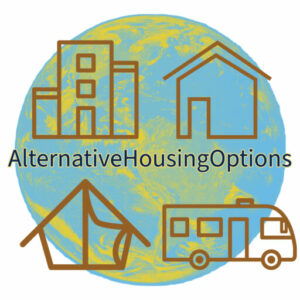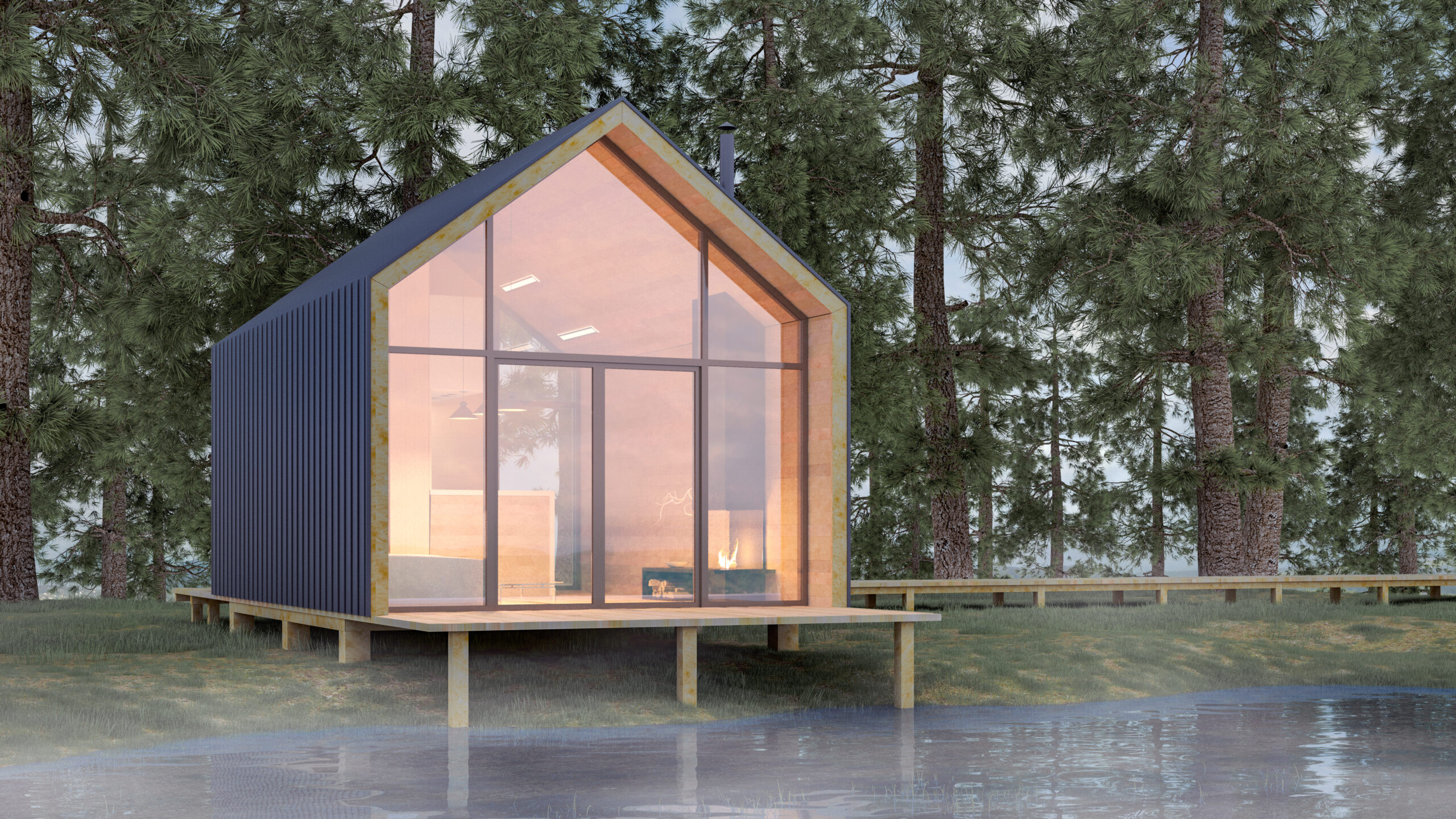The real estate market in the United States experiences cyclical shifts, swinging between sellers’ and buyers’ markets. Homebuyers, sellers, renters, and builders often navigate these fluctuations, seeking stability and wise investments. Alternative housing options, particularly tiny homes, emerge as a unique and profitable avenue for real estate investors. Let’s explore the potential of using tiny homes as rentals.
Know your clients
As with all rental properties, you must know who you rent to. The average renter moves to an area for work or college and wants to be independent but may not want to take on a mortgage payment or homeowner responsibilities. These renters are usually concerned about the amenities they get and the price they will pay.
When you think of tiny homes, you don’t often consider amenities. You think about smaller spaces, less storage, and often unique plumbing and electrical systems. Yet, tiny homes can be just as comfortable as a rental property and cost less for a real estate investor to build or buy than a single-family home, duplex, or apartment building.
Discovering Extraordinary Tiny Homes
Real estate investors can position these tiny homes as unique getaways, allowing individuals to disconnect from the city hustle. They can market these tiny homes as escapes from the ordinary, emphasizing the tranquility and simplicity of living in a compact yet comfortable space.
Tiny Homes can cater to the tech-savvy individual by integrating innovative technologies. These homes become stylish and efficient rentals, offering automated controls, energy-efficient systems, and high-speed internet.
Tiny home rentals can be built with artistic flair, appealing to creative individuals. Like any home, they can be a canvas for a specific style, like a rustic cabin, modern industrial, contemporary, traditional, or anything in between. The best part about tiny homes is that every nook and cranny is creatively used, from under the stairway storage to banquette seating that has storage and turns into a bed.
These homes can be built with electric, plumbing, and HVAC systems to run off solar, compost toiles, collected rainwater, or a more standard connection to city utilities and sewer. Depending on how much the real estate investor is committed to sustainability and wants to cater to a renter with the same practices, it can help determine which route to take.
Navigating Legalities: Is Alternative Housing Legal in My State?
Before delving into the potential of tiny homes as rentals, addressing the legal landscape is crucial. The legality of alternative housing varies across states, and understanding the regulations is paramount for real estate investors.
Tiny homes find legality in states like California, Texas, North Carolina, Florida, Maine, Arizona, Washington, Minnesota, Oregon, and Hawaii. However, specific states like New York, West Virginia, North Dakota, and Wisconsin have more stringent regulations. Investors should know these variations when considering tiny homes for rental ventures.
A Path to Profit in Tiny Living
The potential for real estate investors in alternative housing, particularly tiny homes, is vast and diverse. Investors can create unique rental properties and memorable experiences. However, success in this venture requires a keen understanding of the legal landscape, as alternative housing legality varies across states and municipalities.
2023 costs to build a tiny house
Tiny houses are less expensive to build and maintain than a traditional stick-built home. A professional company can build a tiny house for $30,000–80,000 for you. Or DIY a tiny for $4,000–10,000, averaging around $13,000. Additional expenses may include land purchase, rental, and insurance, contributing to a lower cost than traditional homeownership.
14 Questions to Ask Before Building a Tiny House
Building a tiny home involves carefully considering various financial aspects to ensure a smooth and well-planned process. Here are 14 critical financial questions to ask when embarking on the journey of building a tiny home:
1.What is the Total Cost of Construction? Determine the comprehensive cost of building your tiny home, including materials, labor, permits, and additional expenses.
2. Is DIY Construction an Option? Assess whether you have the skills and time for a do-it-yourself (DIY) project. DIY construction can save money but requires significant time and expertise.
3. Consider Professional Builder Costs. If opting for professional builders, obtain detailed quotes from reputable companies. Consider factors like reputation, experience, and customer reviews when selecting a builder.
4. What will it cost to Land Purchase or Retals? If you don’t own land, evaluate the cost of purchasing or renting a suitable location for your tiny home. Consider zoning regulations and local laws.
5. What are the Insurance Expenses? Inquire about insurance costs for your tiny home. Depending on your chosen insurance plan, coverage may include protection against theft, damage, or liability.
6. Do You Have Utility Connections and Off-Grid Options? Assess the cost of connecting your tiny home to utilities if you opt for a permanent location. Alternatively, explore off-grid options, such as solar panels and rainwater collection, and their associated costs.
7. What Type of Financing and Loan Options are Available? Explore financing options, considering traditional mortgages might not apply to tiny homes. Investigate personal loans, assistance from friends or family, or other creative financing solutions. Nectar has cash-flow financing options for any investor in business for more than 3 years.
8. What Permitting and Inspection Fees Should You Expect? Research the costs associated with obtaining permits and undergoing necessary inspections. Local building departments may have specific fees for tiny home construction.
9. What is the Long-Term Maintenance and Upkeep? Consider the long-term maintenance costs associated with your tiny home. While tiny homes generally have lower upkeep expenses, budgeting for occasional repairs and maintenance is essential.
10. Are There Any Potential Additional Expenses? Anticipate potential unforeseen costs and have a contingency fund. This can include unexpected construction challenges, changes in plans, or any unexpected expenses that may arise.
11 .If Furnishing the Property What is the Cost of Furniture and Appliances? If your tiny home is not fully furnished, factor in the essential furniture and appliances cost. Opt for space-saving and multi-functional pieces that align with the tiny living concept.
12. Are There Transportation Costs? If your tiny home is on wheels, calculate transportation costs to move it to your desired location. Consider any permits needed for transporting a structure of that size.
13. Will Having a Tiny House be Affected by Local Building Codes? Be aware of any expenses related to adhering to local building codes. Some modifications may be necessary to comply with regulations.
14. Will a Tiny Home Hold Resale Value? While tiny homes often depreciate, evaluate potential resale value. Factors such as location, demand, and the overall condition of your tiny home can influence its resale value.
By thoroughly addressing these financial questions, you can create a comprehensive budget and financial plan for building and maintaining a tiny home rental.
The prospect of building tiny house rentals presents a unique and enticing opportunity for real estate investors. As the real estate market experiences fluctuations and individuals seek alternatives to traditional housing, tiny homes have emerged as a viable and attractive option. Understanding the desires and motivations of potential tenants is crucial for investors aiming to capitalize on this growing trend.
—-This article is sponsored by Nectar.
Nectar’s cash flow-based financing allows real estate owners to sell future cash flows to fund these high-ROI projects.
Specific examples of ways people use Nectar financing:
- Add a new amenity—pool, hot tub, unique experiences
- Set up a new unit—furniture, design, labor
- Grow your portfolio—contribute toward a down payment
- Mergers and acquisitions—looking to acquire a property or portfolio?
This is not for brand-new investors. Nectar does require that a real estate investor is in business for 3+ years and has a 12-month trailing P&L.
To explore this financing option, visit Nectar.


